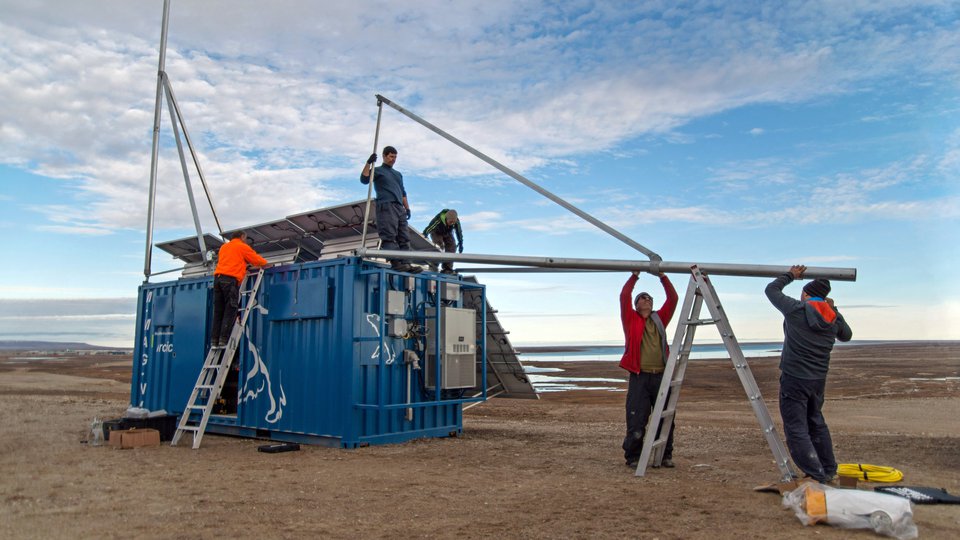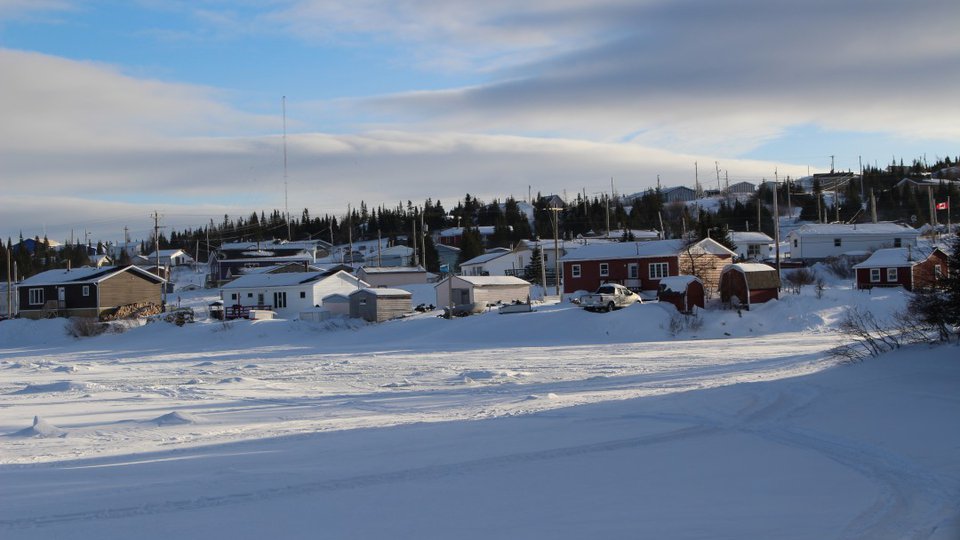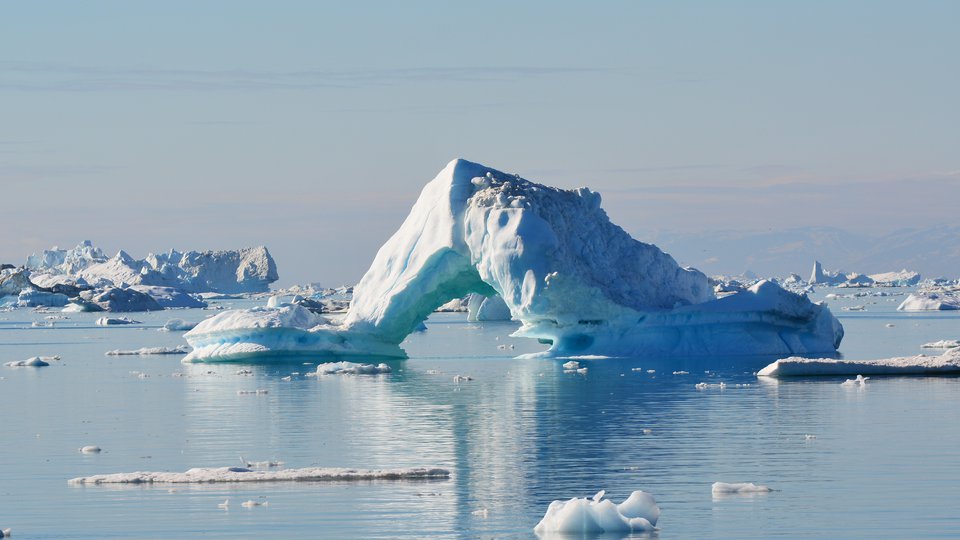
Joshua Stewart was working for NOAA’s National Marine Fisheries Service (NMFS) in 2019 when he became aware of a significant spike in gray whale strandings, with dead whales washing up on beaches throughout North America. The number of strandings led the NMFS to declare an “unusual mortality event,” which is a special designation for an event where large numbers of marine mammals are found stranded and dying.
It was the second such event declaration for gray whales in the previous 20 years, with an earlier one in 1999-2000. Some scientists thought the earlier event was a result of the species simply reaching its carrying capacity after recovering from industrial whaling, but two such mass mortality events in such close proximity made them wonder what was causing them.
“There was an urgent need to understand what might be driving these mortality events and what the status of the population was,” says Joshua Stewart, now an Assistant Professor at the Marine Mammal Institute at Oregon State University’s Hatfield Marine Science Center.
Stewart and his colleagues set out to learn more about what could be causing these mortality events, and he and co-authors published their findings in a 2023 issue of Science. Their article, “Boom-bust cycles in gray whales associated with dynamic and changing Arctic conditions,” focuses on two significant factors the authors found to be associated with these mass mortality events: prey availability and sea ice impeding access to feeding areas. The authors wrote that gray whales’ population dynamics are “tightly coupled to Arctic prey availability and access to feeding areas.”
“Whereas in the previous two mortality events, the population has bounced back pretty quickly, we don't know what's going to happen this time.”
“It seems to be the combination of those two things where there's not a lot of prey—low quality prey, not a lot of biomass—and they have restricted access to their feeding areas,” Stewart says. “When both of those things happen at the same time in the same year, then we see these really big die-offs of up to a quarter of the population.”
A gray whale can reach almost 50 feet in length and weigh 90,000 pounds, yet many are surprised to learn that these massive animals’ diet consists of tiny invertebrate animals. They are filter feeders, sucking sediment off the sea floor and using their up to 180 baleen plates to filter it, eating benthic and epibenthic invertebrates—like amphipods—that live on or near the sea floor. While much of their diet consists of benthic crustaceans, scientists also believe they can eat other things, such as pelagic zooplankton.
Much of their feeding occurs during the summer months when gray whales spend time in the Arctic. They typically spend four to five months feeding up north, with many gray whales in the eastern population feeding in the northern Bering and Chukchi seas in the eastern North Pacific. These seas are rich in food sources since ice-associated algal growth—which is produced when the weather starts to warm in spring and early summer—decays and falls to the bottom of the ocean. Since many areas have fairly shallow seas, gray whales and other marine life can access the food easily, and the area is productive and bustling with life.
However, gray whales don’t stay in the Arctic all year. Each year, they migrate 10,000-14,000 miles roundtrip. After a summer feasting on benthic and epibenthic invertebrates, most gray whales head south in the fall. Many winter off Baja California, Mexico, giving birth to calves during migration or once they arrive. Calves are born at 2,000 pounds and are around 15 feet long. After winter, the whales head back north for the next summer.
Gray whales are massive, long-lived animals. While scientists don’t know their exact lifespan, one female that was examined after death was estimated to be 75 or 80 years of age. However, they rely on low trophic level species for their diet, which can make them sensitive to the environmental fluctuations and climate change that impact their prey species.
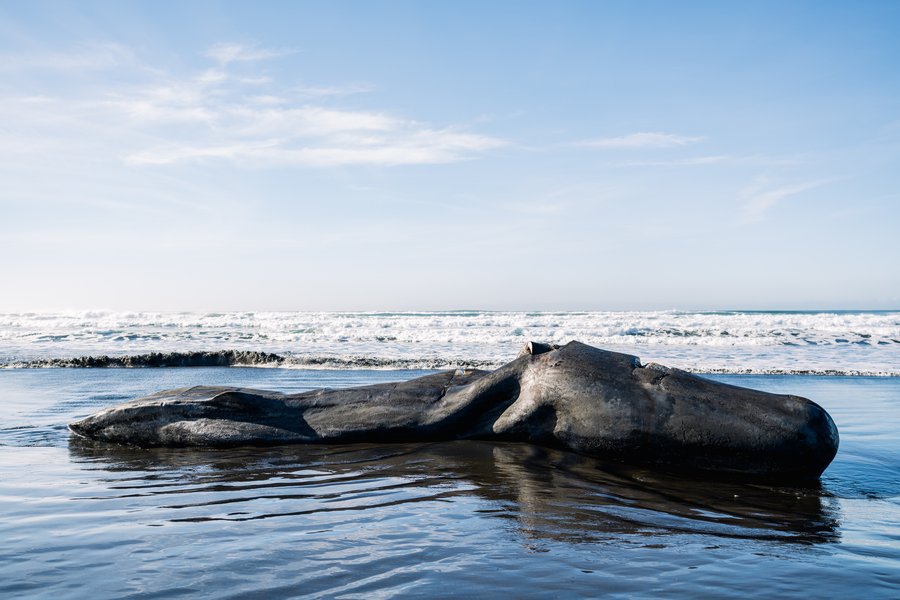
The number of gray whale strandings led the NMFS to declare an “unusual mortality event,” which is a special designation for an event where large numbers of marine mammals are found stranded and dying. (Photo: Adobe Stock)
Using rich library of gray whale data to learn more
Scientists have an abundance of data on eastern North Pacific Gray Whales, with records dating back decades. Before commercial whaling, scientists estimate that Eastern North Pacific gray whales numbered around 15,000-30,000, based on the results of population modeling. However, the Science study authors note that some studies use genetic evidence to estimate the population of prehistoric whales, and the results these studies found are considerably higher, ranging from 75,000 to 120,000 whales, though they note this likely included the Western North Pacific population as well. They also note there could have been a larger carrying capacity for whales during the Last Glacial Minimum.
Commercial whaling drastically reduced the Eastern North Pacific gray whale population in the early 1900s, with fewer than 5,000 of the animals remaining. However, conservation measures were taken in the 1930s and 1940s, and then commercial whaling was halted due to a moratorium in the mid-1980s, gray whales bounced back, reaching the point where they were delisted from the U.S. Endangered Species Act in 1994.
Since many species have not yet recovered from commercial whaling to the extent gray whales have, the species can provide researchers with unique and valuable data. Other whale species may be lower in abundance and not close to reaching the carrying capacity of their environment, leaving scientists unable to discern how environmental and climate-related factors impact them. However, since gray whales are more abundant, researchers can learn more about how their population dynamics are influenced by environmental and climate-related factors.
“I think that because we have so much data for this population—it's one of the most closely studied populations of large whales in the world—it’s provided us with some really unique insights into what the population dynamics of these large whale species might look like,” Stewart says. “And they appear to be way more dynamic than we expected.”
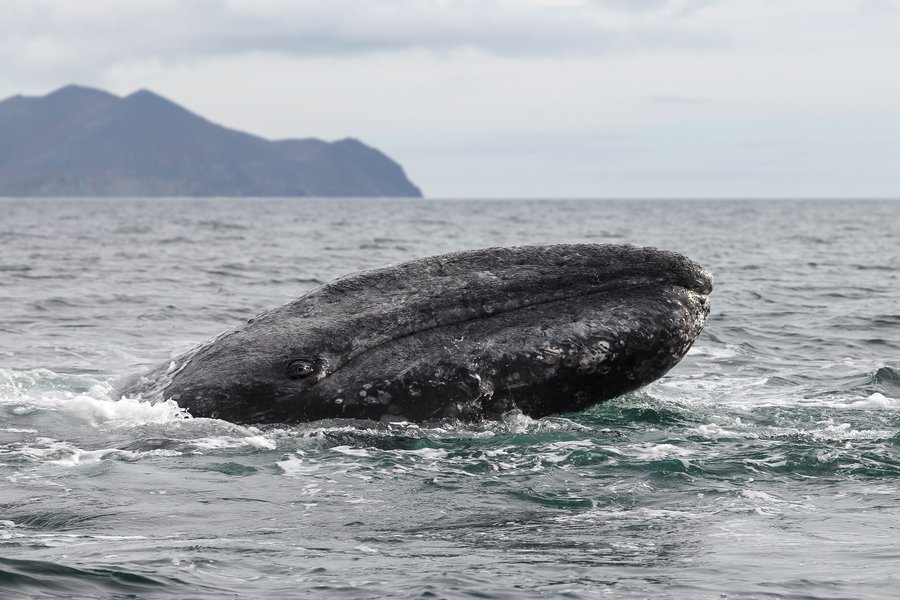
A gray whale can reach almost 50 feet in length and weigh 90,000 pounds. (Photo: Adobe Stock)
Stewart and his colleagues decided to investigate these dynamics to learn more about the mass mortality events. Using long-term monitoring data sets they examined estimates of the abundance of eastern North Pacific gray whales (with data going back to 1968), as well as calf reproduction (with records dating back to 1980), coastal strandings of gray whales (with data since 1974), and body condition measurements dating back to 1987. They used this data in an integrated population dynamics model to learn more about factors impacting the whales, including both natural and human-related factors.
“Our goal was to put all of those different data sources together to try and understand how the population is fluctuating and what might be driving it,” Stewart says.
When they delved into the data and ran models to learn more, the scientists found not just the 1999 and 2019 mass mortality events, but also a third significant decline in abundance that took place in the late 1980s, before stranding data improved in 1990. Each one of these events caused the species abundance to drop by 15 to 25%. Putting the clues together, the researchers realized these types of events might happen more frequently than they previously thought.
“It became clear that these are maybe not that unusual, that they are sort of periodic mass mortality events that might be happening more often than we think,” Stewart says. “And that the population, at least in the past, has been able to recover pretty rapidly from these really big die offs.”
While the first two events each lasted for a year or two, the most recent one lasted for around four years, only officially ending in late 2023. Stewart says the whale population isn’t bouncing back from this mass mortality event as quickly as it did from the other two events.
“Whereas in the previous two mortality events, the population has bounced back pretty quickly, we don't know what's going to happen this time,” Stewart says. “We haven't seen quite as much of a sort of rapid increase in birth rates as we have in previous mortality events. And I think that there is still quite a lot of uncertainty about how this population will or could even adapt to these sorts of climate impacts.”

Gray whales were were delisted from the U.S. Endangered Species Act in 1994. (Photo: Adobe Stock)
Seeking the causes of mass mortality events
After analyzing all the data, the study authors wrote that the “population dynamics of an iconic and highly mobile polar-associated species are tightly coupled to Arctic prey availability and access to feeding areas.” They noted the two main factors involved were low prey biomass and high ice cover and, when those two factors coincided, the major mortality events occurred, with 15-25% of the population perishing.
The study authors found benthic crustacean biomass and sea ice access together to be significantly related to the carrying capacity of the species. In 2010, there was a significant drop in crustacean biomass, but sea ice access was average that year, and no major mortality event occurred, though birth rates and abundance were somewhat lower.
While it may seem obvious that having less of their preferred food available would negatively impact the species, the sea ice correlation is more complicated. Since gray whales must surface in order to get air and breathe, they cannot access areas that are completely covered in sea ice. They must wait for the sea ice to break up before being able to feed in that area. When a location has ice that impedes access during the whales’ normal feeding season, it is detrimental to them.
However, while it may seem that longer periods of ice-free conditions would lead to longer feeding periods and be good for gray whales, this does not seem to be the case. Since gray whales migrate south each winter, the increased length of the ice-free season does not offer much benefit. The authors noted that in 2019, gray whales were able to access feeding areas in the Arctic for 266 days, which they wrote is “presumably approaching a point of diminishing returns.”
The Arctic is warming nearly four times as fast as the rest of the world, and climate change is causing a number of changes to the ocean and seafloor that negatively impact gray whales. Warmer conditions and melting sea ice can lead to warmer water and increased currents. When the current picks up, it can remove smaller grains of fine sediment from the seafloor, which provides an important habitat for the amphipods gray whales like to eat. These conditions can also lead to reduced organic carbon on the seafloor, which also decreases Arctic benthic crustacean biomass, especially since warmer water is more difficult for the prey species to tolerate. “All of those things, which are associated with melting sea ice and less sea ice cover, are really bad for gray whale prey,” Stewart says.
“What happens through the winter is that you have a layer of algae that grows on the underside of the sea ice and it dies and sinks to the seafloor and decomposes and it basically fertilizes the seafloor,” Stewart says. “It fertilizes and provides food for the things that the gray whales want to eat, which are benthic amphipods, they’re little crustaceans that live in the sediments. And when you have less of that algae floating down to the seafloor, you have lower quality prey, and you have less prey available for gray whales. So over the long term, as you have less sea ice, you have less of that fertilizer reaching the seafloor, which is bad for gray whale food.”
With less of their preferred food available, the whales may have to seek food in other locations, which also may not be ideal.
“The general trend has been less sea ice with increasing Arctic temperatures and accelerating climate change, which has led to this overall decline in the quality of gray whale prey and the amphipods that they really like are being pushed further and further north into marginal habitats,” Stewart says. “So there's just less food available for them, basically. So in the short term, the reduction in sea ice can be beneficial because it gives them more access to their feeding areas, but if there's not enough food there when they arrive because there has been a decrease in sea ice and the decrease in prey quality, that's also not good for gray whales.”
As scientists continue to study gray whales, particularly the eastern North Pacific population, they are learning more about how these massive, long-lived marine mammals are being impacted by climate change. Though they migrate huge distances each year, even small environmental changes in the Arctic can impact them, with ripple effects spreading far beyond the Arctic. The authors wrote the findings suggest “even mobile, long-lived species are sensitive to dynamic and changing conditions as the Arctic warms.”
